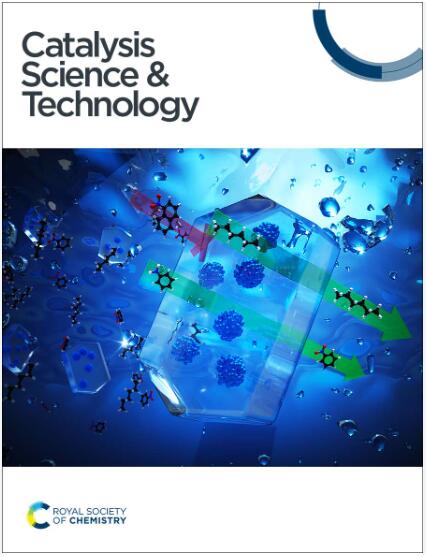镍催化氨基醇与芳基亲电试剂芳基化的DFT机理研究:对化学选择性起源的见解
IF 4.4
3区 化学
Q2 CHEMISTRY, PHYSICAL
引用次数: 0
摘要
镍催化的醇/胺与芳基卤化物的交叉偶联使得同时含有竞争性nhh和OH基团的复杂底物的O-或n -芳基化具有挑战性。本文利用离散傅立叶变换(DFT)计算,研究了分离的醇类或胺类和氨基醇类与亲电试剂选择性芳基化的反应机理和起源。该反应依次经过氧化加成、阴离子交换、还原消除生成最终产物。还原消除是整个反应的速率和化学选择性的决定步骤,还原消除过渡态的能量差可以定量地合理化化学选择性的实验结果。空位效应是调控竞争醇和烷基胺的N-或o -芳基化的主要因素,而电子效应和空位效应共同调控竞争醇和芳胺的N-芳基化选择性。此外,氨基醇选择性O-芳基化反应的化学选择性源于底物和催化剂的畸变较小,孤对电子n(O)与空位σ*(Ni-C)轨道之间的相互作用较强,C-O非共价相互作用强度较大。这些对调节化学选择性因素的见解将有助于开发具有竞争性亲核位点的复杂底物的选择性芳基化方法。本文章由计算机程序翻译,如有差异,请以英文原文为准。

A DFT mechanistic study on nickel-catalyzed arylation of amino alcohols with aryl electrophiles: insights into the origins of chemoselectivity†
Nickel-catalyzed cross-couplings of alcohols/amines with aryl halides enable the challenging chemoselective O- or N-arylation of complex substrates concurrently containing competitive NH and OH moieties. Here, the reaction mechanisms and origins of the selective arylation of isolated alcohols or amines and amino alcohols with electrophiles were investigated using DFT calculations. The reaction proceeds sequentially through oxidative addition, anion exchange, and reductive elimination to produce the final product. Reductive elimination is the rate- and chemoselectivity-determining step of the overall reaction, and the energy differences of reductive elimination transition states can quantitatively rationalize the experimental results of chemoselectivity. The steric effect is the main factor regulating N- or O-arylation for competitive alcohols and alkylamines, while the electronic effect and steric effect jointly govern the N-arylation selectivity for competitive alcohols and arylamines. Furthermore, regarding the selective O-arylation of amino alcohols, the chemoselectivity originates from the smaller distortion of the substrate and catalyst, the stronger interaction between the lone pair electron n(O) and the vacant σ*(Ni–C) orbital, and the larger C–O non-covalent interaction strength. These insights into the factors regulating chemoselectivity will enable the development of selective arylation methods for complex substrates with competing nucleophilic sites.
求助全文
通过发布文献求助,成功后即可免费获取论文全文。
去求助
来源期刊

Catalysis Science & Technology
CHEMISTRY, PHYSICAL-
CiteScore
8.70
自引率
6.00%
发文量
587
审稿时长
1.5 months
期刊介绍:
A multidisciplinary journal focusing on cutting edge research across all fundamental science and technological aspects of catalysis.
Editor-in-chief: Bert Weckhuysen
Impact factor: 5.0
Time to first decision (peer reviewed only): 31 days
 求助内容:
求助内容: 应助结果提醒方式:
应助结果提醒方式:


